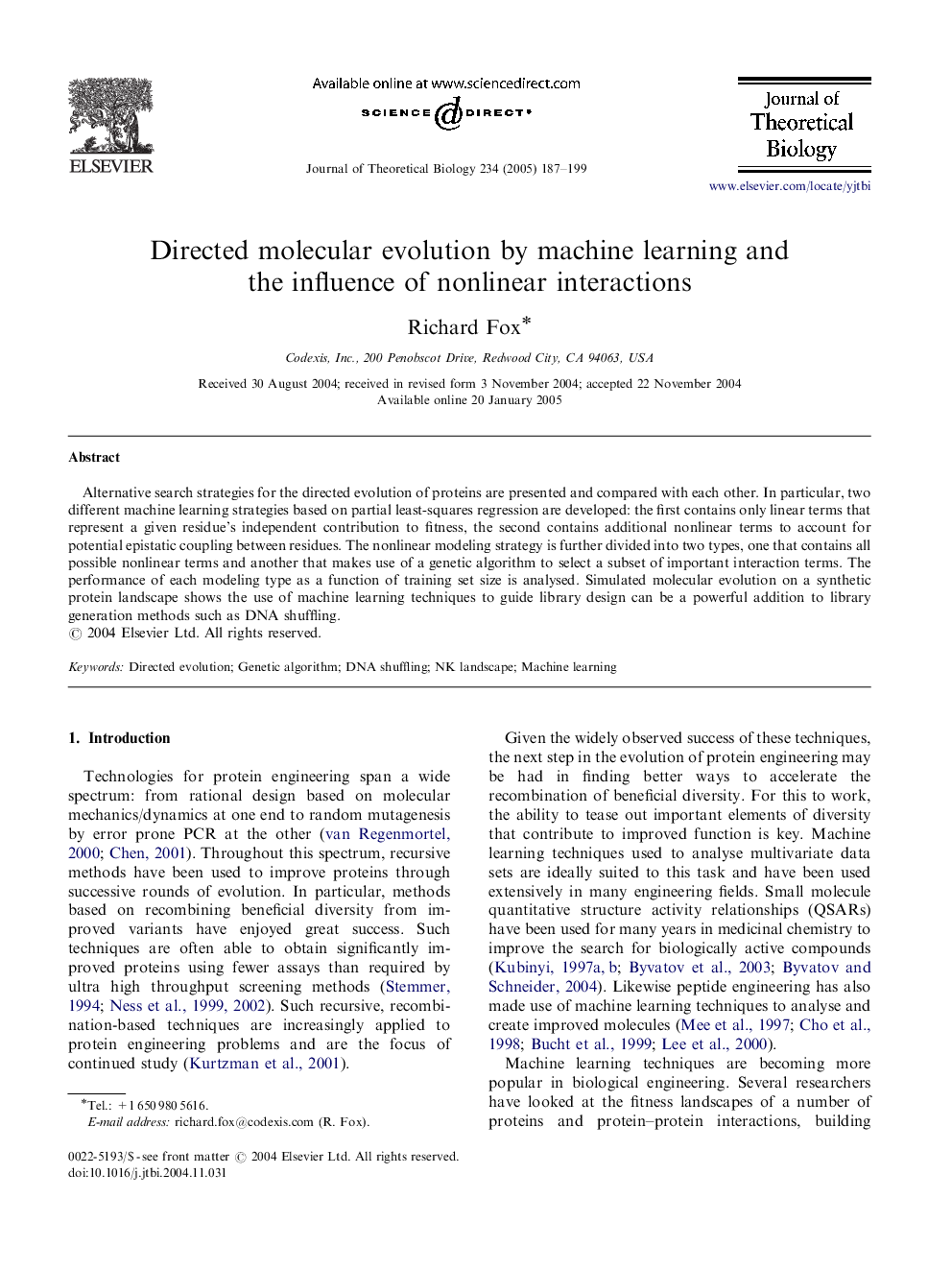| Article ID | Journal | Published Year | Pages | File Type |
|---|---|---|---|---|
| 9469597 | Journal of Theoretical Biology | 2005 | 13 Pages |
Abstract
Alternative search strategies for the directed evolution of proteins are presented and compared with each other. In particular, two different machine learning strategies based on partial least-squares regression are developed: the first contains only linear terms that represent a given residue's independent contribution to fitness, the second contains additional nonlinear terms to account for potential epistatic coupling between residues. The nonlinear modeling strategy is further divided into two types, one that contains all possible nonlinear terms and another that makes use of a genetic algorithm to select a subset of important interaction terms. The performance of each modeling type as a function of training set size is analysed. Simulated molecular evolution on a synthetic protein landscape shows the use of machine learning techniques to guide library design can be a powerful addition to library generation methods such as DNA shuffling.
Related Topics
Life Sciences
Agricultural and Biological Sciences
Agricultural and Biological Sciences (General)
Authors
Richard Fox,
